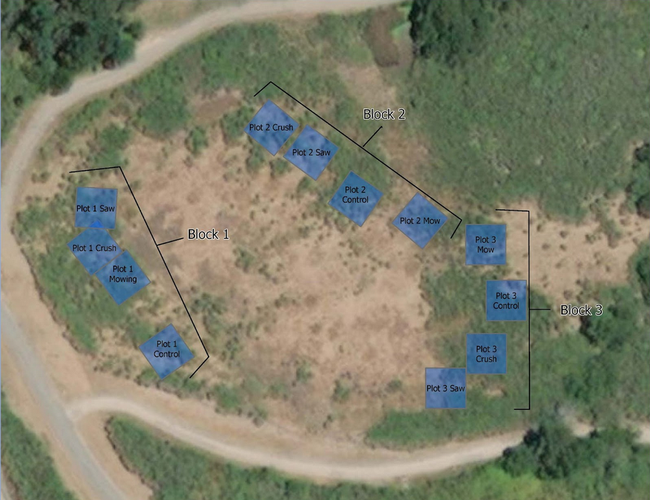UC Cooperative Extension San Benito County is going to collaborate with San Jose State University to develop a CAL FIRE Forest Health Research grant proposal. We are interested in looking at different methods to control coyote brush (Baccharis pilularis). Coyote brush is a native shrub. However, it invades our coastal prairie grasslands, which are already in decline and are home to many native and special status plants and wildlife, not to mention being valuable forage for livestock. We already conducted a pilot study looking at different treatments (chainsaw, masticating, and crushing) prior to a prescribed burn to see which pre-burn treatments allow the burn to be more successful in controlling the coyote brush. And we are hoping to expand this study!
We are looking for landowners who would be interested in collaborating with us on the project, if it gets funded. Please take less than 5 minutes to fill out this survey to let us know if you've tried to control coyote brush in the past, how it has worked, and if you'd be interested in being part of this study.
If you are interested in reading more about the pilot study, below is the study abstract from the 2022 California Native Plant Society Conference:
Some combinations of mechanical pre-treatment & prescribed fire increase shrub mortality in Baccharis pilularis (coyote brush) encroached coastal prairie restoration, presented by Dr. Kate Wilkin
California coastal prairies have undergone dramatic woody encroachment by shrubs, including Baccharis pilularis (coyote brush). The conversion of grasslands to shrublands alters many key ecosystem services for this endangered and important habitat. These prairies, like prairies around the world, were likely maintained to be free of shrubs by frequent Indigenous burning. Many land managers have tried to remove coyote brush, but this resilient native plant is a tenacious resprouter. One technique, prescribed fire, is often difficult to apply in encroached coastal prairies because of the narrow burn windows allowed for public safety, which often do not allow more intense prescribed fires to occur. To expand the burn window and improve the shrub removal efficacy of this treatment, we completed mechanical treatments (mastication, crush, and sawing) before prescribed fire. Saw pre-treatment increased dead surface fuels, fire behavior, and shrub mortality more than other treatments. Mastication increased these factors as well, but to a lesser extent. Crushing and the control were similar. While saw and mastication pre-treatments were better than our alternatives, they had very low shrub mortality (11 and 6% respectively). We plan to complete another prescribed fire to determine if we can improve shrub mortality further.
Author - San Benito County Director and Area Livestock and Natural Resources Advisor
